ELECTROMAGNETIC PULSE (EMP) ATTACKS
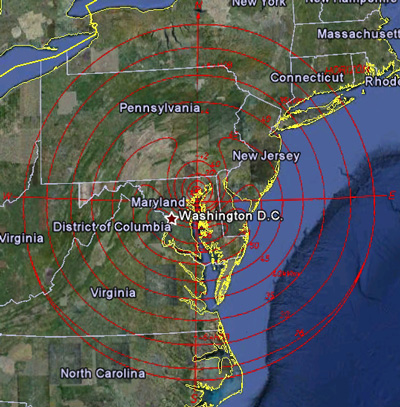
An Electromagnetic Pulse (EMP) can be generated by a high altitude nuclear explosion (HEMP) and a Geomagnetic Storm (GMS) is induced by a Coronal Mass Ejections (CMEs) on the sun. Taken together, they are the two most likely threats that can completely devastate a modern society and transform it into a “New” Dark Ages. To understand the full range of consequences and damages associated with the detonation of an EMP device, or a severe GMS, one needs only to look at the current social economic conditions of today’s modern society.
The physical and social fabric of the United States, and other developed nations is sustained by a complex and dynamic network of interlocking and interdependent infrastructures whose harmonious functioning enables the myriad actions, transactions, and information flow that undergird the orderly conduct of civil society in this country. The vulnerability of these infrastructures to EMP threats — deliberate, accidental, and acts of nature, is incredibly severe and has the potential to render this nation into a state of devastation, starvation and anarchy.
At Hardened Structures we provide specific hardening designs, fabrications, components, installation and construction services to mitigate the effects of EMP, HEMP, GMS, Blast, Chemical, Biological, Radiological and Nuclear weapons.
Electronics are used to control, communicate, compute, store, manage, and implement nearly every aspect of modern military and civilian systems. When a nuclear explosion occurs at high altitude, the EMP signal it produces will cover the wide geographic region within the line of sight of the detonation. For example, a nuclear explosion at an altitude of 100 kilometers would expose 4 million square kilometers, about 1.5 million square miles, of Earth surface beneath the burst to a range of EMP field intensities. This broad band, high amplitude EMP, when coupled into sensitive electronics, has the capability to produce widespread and long lasting disruption and damage to the critical infrastructures that underpin the fabric of U.S. society. In effect, water will cease running in about 24 hours and food will disappear from the stores within 3 days. Depending on the magnitude of the EMP or GMS event, this condition may persist from 6 months to 5 years.
At EMPEngineering.com we recognize the tremendous dependence of modern society on the electrical power system relative to its vulnerability to an EMP attack and the inherent effects of its long-term, catastrophic consequences. The implicit invitation to take advantage of this vulnerability, when coupled with increasing proliferation of nuclear weapons and their delivery systems, is a serious concern now being addressed by governments and corporations alike. A single EMP attack can seriously degrade or shut down a large part of the electric power grid in the geographic area of EMP exposure effectively instantaneously. There is also a possibility of functional collapse of grids beyond the exposed area, as electrical effects propagate from one region to another.
The time required for full recovery of service would depend on both the disruption and damage to the electrical power infrastructure and to other national infrastructures. Larger affected areas and stronger EMP field strengths will prolong the time to recover. Compounding this disaster would be severe water, food and heating shortages that would certainly accompany an EMP event leading to civil unrest and possibly martial law.
Electrical power is necessary to support critical infrastructures, including supply and distribution of water, food, fuel, communications, transport, financial transactions, emergency services, government services, and all other infrastructures supporting the national economy and welfare. Should significant parts of the electrical power infrastructure be lost for any substantial period of time, the consequences are likely to be catastrophic, and many people may ultimately die for lack of the basic elements necessary to sustain life in dense urban and suburban communities. In fact, such impacts are likely in the event of a prolonged solar event or EMP attack unless practical steps are taken to provide protection for critical elements of the electric system and for rapid restoration of electric power, particularly to essential services.
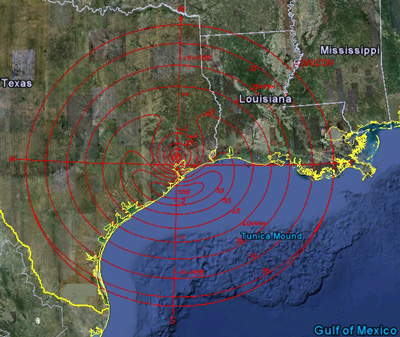
Making preparations to manage the effects of an EMP attack or GMS event, including understanding what has happened, maintaining situational awareness, having plans in place to recover, challenging and exercising those plans, and reducing vulnerabilities, is critical to reducing the consequences, and thus probability, of attack. At Hardened Structures and EMP Engineering.com we design and implement the appropriate level approach to balance prevention, protection, and recovery to best suit our Client’s needs.
However, to set the stage for understanding the potential threat under conditions in which all infrastructures are under simultaneous attack, it is important to realize that the vulnerability of the whole — of all the highly interlocked critical infrastructures may be greater than the sum of the vulnerability of its parts. The whole is a highly complex system of systems whose exceedingly dynamic and coordinated activity is enabled by the growth of technology and where failure within one individual infrastructure may not remain isolated but, instead, induce cascading failures into other infrastructures. Therefore, it is imperative that the Client’s particular EMP mitigation designs and recovery plans are tailored to accomplish “complete stand-alone” operational status during a EMP or GMS event.
The scenarios envisioned by an EMP attack or GMS event involve potential failures distributed across a wide geographical extent. These include multiple combinations of node failures, a condition that generally is outside the parameter space of validation of extant system models and poses a severe challenge to predicting the subsequent evolution of the infrastructure response. The separation of these infrastructures into different domains tends to obscure the real interdependencies that sustain the effectiveness and daily operation of each one.
Experience demonstrates that it is sometimes easy to overlook the less obvious roles that such interdependencies and interactions may play, and coupling pathways may be easily overlooked. As an example, many of the recovery procedures developed by organizations to deal with emergencies involve the implicit assumption that transportation is available and people will be put on airplanes and go somewhere to diagnose and repair something. In the immediate aftermath of 9/11, all civilian airplanes were grounded. In 1991, a single point failure inside the telecommunications system, the accidental severing of a single fiber-optic cable in the New York City region, not only blocked 60 percent of all calls into and out of New York, but also disabled all air traffic control functions from Washington, D.C., to Boston — the busiest flight corridor in the Nation — and crippled the operations of the New York Mercantile Exchange. These key interdependencies were always there, but they were not recognized as warranting advanced contingency planning, situational awareness in degraded conditions, and operational workarounds. At Hardened Structures and EMPengineering.com we seek to identify all interdependencies and interactions between our Client’s internal systems and all external Points of Entry. It is only by identifying, shielding and protecting all entry points and infiltrations paths can a suitable EMP mitigation program be implemented.
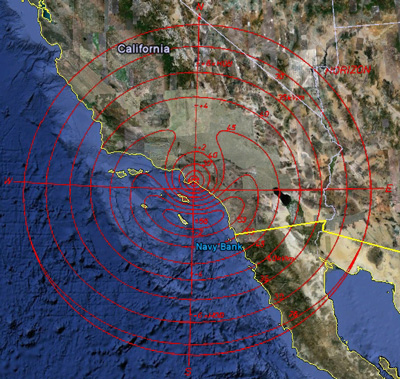
HEMP ATTACKS
HEMP generation. HEMP is caused by a nuclear burst at high altitudes. Prompt gamma rays following the nuclear detonation are the principal source of HEMP. This gamma radiation causes bursts of electron flow from the Compton effect, a photoelectric effect, and a “pair production” effect. Of these three effects, however, the primary source of HEMP is the Compton effect.
Gamma radiation. At high altitudes (above 30 kilometers), the atmosphere is thin and thus allows gamma radiation from the nuclear burst to travel out radially for long distances. Below the center of the burst, however, the atmospheric density increases as the earth’s surface is approached. The prompt gamma rays propagate toward the earth in a thin spherical shell, moving at the speed of light away from the burst…
Compton scattering. When the downward directed rays encounter the upper regions of the atmosphere, they begin to interact with the atoms (or molecules) of the atmosphere at a rate which is a function of atmospheric density and burst conditions. The dominant interaction is Compton scattering, in which the energy of a gamma ray is partially transferred to an electron of an air atom (or molecule). The electron then begins traveling in approximately the same direction as the gamma ray. The other product of collision is a gamma ray of reduced energy. The spherical shell of gamma rays is converted during Compton scattering into a spherical shell of accelerated electrons.
Deposition region. The region in which Compton scattering occurs is called the deposition region. The thickness and surface range of the deposition region is a function of height-of-burst (HOB) and weapon size and type. A representative thickness is from 20 kilometers to 40 kilometers, but a deposition region may be as thick as 70 kilometers (10 kilometer to 80 kilometer altitude) for a 300 kilometer HOB and a 10 megaton weapon.
Radiating magnetic field. In the spherical shell of Compton electrons, the electrons are charged particles that rotate spirally around the earth’s geomagnetic field lines. The electrons thus have a velocity component transverse to the direction of the gamma radiation. These transverse currents give rise to a radiating magnetic field. This field propagates through the atmosphere to the earth’s surface as if it were contained in the same spherical shell as that formed by the original gamma ray shell.
HEMP ground coverage. Significant HEMP levels can occur at the Earth’s surface out to the tangent bounded range of effect (and beyond, for frequencies below 100 kilohertz). The tangent bounded range of effect is where the line of sight from the burst is tangent with the Earth’s surface.
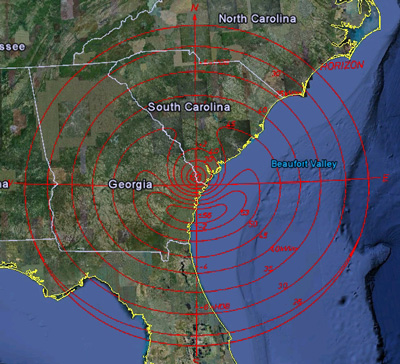
As an example, the HEMP generated by a nuclear explosion at an altitude of 500 kilometers would illuminate the whole continental United States. If high-yield weapons are used, the field strength will not vary much with HOB, so this large geographic area can be covered with little reduction in peak field strength.
Magneto hydrodynamic EMP (MHD-EMP) MHD-EMP is the late time (t > 0.1 second) component of EMP caused by a high altitude nuclear burst. Two distinct physical mechanisms produce different parts of the MHD-EMP signal: an “early phase” from 0.1 to 10 seconds after the detonation, and “late phase” lasting from 0.1 to 1000 seconds. MHD-EMP fields have low amplitudes, large spatial extent, and very low frequency. Such fields can threaten very long landlines, including telephone cables and power lines and submarine cables.
MHD-EMP early phase generation. A nuclear burst at high altitudes gives rise to a rapidly expanding fireball of bomb debris and hot ionized gas. This plasma tends to be diamagnetic in that it acts to exclude the earth’s magnetic field from the inside of the fireball. Thus, as the fireball expands and rises in early stages, it will deform the geomagnetic field lines and thereby set up the early phases of the MHD-EMP, which can propagate worldwide. The region on the ground immediately below the burst is shielded from early time MHD-EMP by a layer of ionized gas (the X-ray patch) produced by X-rays from the nuclear burst.
MHD-EMP late phase generation. Residual ionization and the bomb-heated air under the rising fireball are mainly responsible for the late phase of the MHD-EMP. As the bomb-heated air rises, residual ionization moves across geomagnetic field lines and large current loops form in the ionosphere. The ionosphere current loops then induce earth potentials. The late phase of the MHD-EMP is seen in large sections of the earth’s surface, including regions at the magnetic conjugate points. Though amplitudes are smaller than for HEMP, the low frequency fields can introduce damaging potential differences on long cable systems.
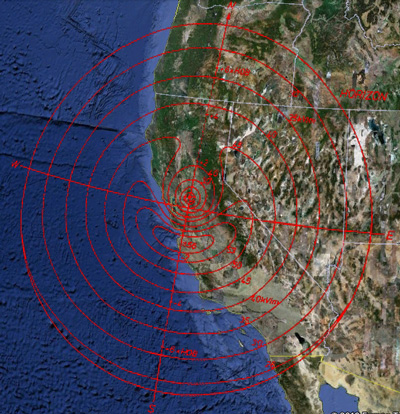
Surface burst EMP (SBEMP). SBEMP is produced by a nuclear burst close (less than 0.2 kilometers) to the earth’s surface. The EMP is generated in the source region, which extends out to a bounded range of effect of 1 to 5 kilometers from the burst. A surface burst also has fields radiating outside the source region, with those field amplitudes significant (greater than 5 kilometers per meter) out to ranges of 10 kilometers and more. In this range, the radiated EMP is a principal threat to systems that respond to very low frequencies or have very large energy collectors such as long lines. Conducted EMP for these systems is such that special attention must be given to surge protection to ensure that the high currents can be dissipated.
Source region. The generation of EMP by a surface burst starts when the gamma rays travel out radially from the burst. These rays scatter Compton electrons radially from the burst, leaving behind relatively immobile positive ions. This charge separation produces radial electric fields (Er) with amplitudes over 100 kilovolts per meter (amplitudes may approach 1 megavolt per meter) and risetimes as short as a few nanoseconds. Since the ground conducts better than the air at early times, the strong radial electric field causes a ground current to flow in a direction opposite to the radial Compton current in the air. The resulting current loops produce azimuthal magnetic fields. Magnetic fields are strongest at the earth’s surface and diffuse both upward and downward from the interface. The discontinuity due to the air-earth interface also generates strong vertical electric fields in the source region. Source region fields depend strongly on factors such as weapon yields (gammas and neutrons), HOB, and distance from the burst. The interaction with a system is very complex: besides EM fields, the system may be exposed to nuclear radiation, in addition to being located in a region of time varying currents and conductivity. In specifying a source region environment for a system, then, the concept of balanced survivability is useful as it is with all EMP environments. If a facility is designed to withstand ionizing radiation and other nuclear effects at a specific range from a given burst, it should also be designed to withstand the EMP effects generated at that range.
Air-burst EMP. Air-burst EMP results from a nuclear explosion at intermediate altitudes – 2 to 20 kilometers. The EMP produced by a burst at heights between 0.2 and 2 kilometers will share characteristics of air and surface bursts, and a burst between 20 and 40 kilometers will cause EMP sharing characteristics of air-burst and high altitude EMP. The source region resembles the surface burst source region in that weapon gammas scatter Compton electrons radially outward. Positive ions are left behind, producing charge separation and radial electric fields. For air burst EMP, there is no return path through the grounds. Due to ionization, however, increased air conductivity enables a conduction current to flow opposite the Compton current in the air. Still, no significant current loops are formed, and the large azimuthally magnetic fields typical of a surface burst do not result.
Environment-to-facility coupling. To analyze how HEMP will affect facilities and electronic equipment, the exterior free field threats must be related to system, sub-system and circuit responses. The functional relationship between external causes and internal effects, is often called a “transfer function”. The analysis involves learning how the system collects energy from the incident HEMP field. The result is usually a matrix of internal fields and transient voltages and currents that may flow in circuits and sub-systems. This is called “determination of the coupling interactions between the external threat and the system”. Generally, HEMP enters shielded enclosures by three different modes: diffusion through the shield; leakage through apertures such as seams, joints and windows; and coupling from intentional or inadvertent antennas.
